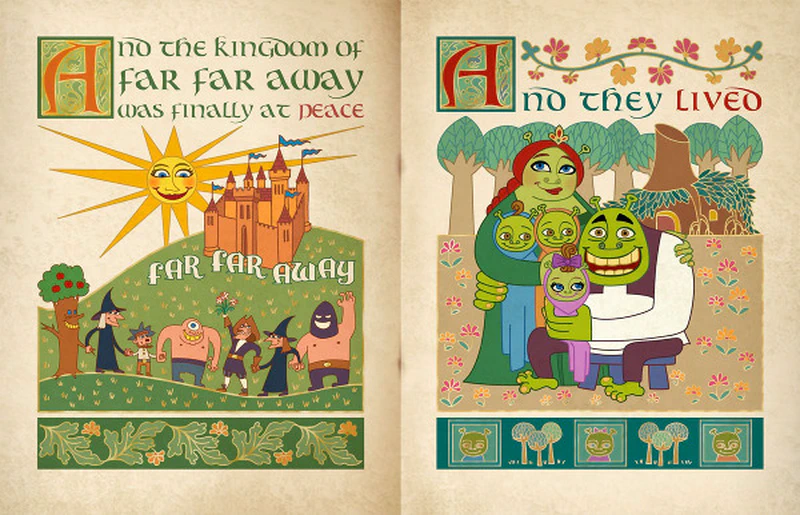Once upon a time there was a product manager whose products couldn’t find their audience. This made the product manager very unhappy. One day however, while searching again and again for how to make his products attractive, he fished out an online article. An article by Pixar on the art of storytelling, and he whispered to himself: if this works for a story, it works for a product. From that day forward he took particular care to follow the 22 recommendations of the art of storytelling from Pixar. He lived happily and his products sold like hotcakes.
This fable has long been forgotten, and yet these 22 recommendations do indeed exist, and the product manager1 I was talking about recorded them in an old grimoire explaining how he transformed stories into products. Here’s what the grimoire reveals:
-
You admire a character more for their persistence than for their successes. Product manager’s note: You must constantly put the work back on the workbench.
-
You must keep in mind what interests your audience, not what pleases you. This can be very different. Product manager’s note: remember to use personas, conduct surveys, integrate my end users.
-
You can start with a subject without a precise thread, with impressions, and when you’ve understood: you rewrite everything as a story. Product manager’s note: For my teams nothing beats a story.
-
Once upon a time ___. Every day, ____. One day _____. Because of ______. Because of ______. And finally _____. Product manager’s note: think why, who, what, how.
-
Simplify. Focus. Combine characters. Avoid detours. You think you’re losing value, but it frees you. Product manager’s note: focus on value, prioritize by value.
-
What is your character good at? comfortable with? Put them in an opposite situation and observe: how do they handle it? Product manager’s note: think differently!
-
Know the end of your story before its middle. Seriously. Finishing is hard, start by finishing! Product manager’s note: start with what is essential to my product, the rest will come after.
-
Finish your story, even if it’s not perfect. We’re not in an ideal world. You’ll do better next time. Product manager’s note: you need to know how to finish. No over-quality. You improve by practicing.
-
When you’re stuck, make a list of what COULD NOT happen next. Often you’ll find how to unblock the situation. Product manager’s note: put yourself in situations to think differently, games for example.
-
Set aside the stories you love. What you love in them is a reflection of yourself. You need to realize this before going further. Product manager’s note: Oh goodness, muscle memory!
-
Put your story on paper to make it tangible. As long as it’s in your head you won’t share it with anyone. Product manager’s note: share a product as early as possible, something concrete, something finished as early as possible.
-
Forget the first thing that comes to mind. And the 2nd, 3rd, 4th, 5th - avoid obvious things. Surprise yourself. Product manager’s note: The first “how” isn’t necessarily the right one. Think of several, challenge, look for other alternatives.
-
Your characters have strong opinions. Passivity, neutrality may seem interesting to you, but it’s poison for the audience. Product manager’s note: favor the “Wow” effect.
-
Why must you tell THIS story? What fire burns in you to tell this story? This is the heart of the matter. Product manager’s note: make an elevator pitch, propose a vision for each product. Why for goodness sake!
-
If you were your character, in this situation, how would you feel? Honesty makes even the most incredible situations credible. Product manager’s note: Be honest with your product. Are you proud of it? Is my level of requirement the right one?
-
What are the stakes? Is your character really there for them? What happens in case of failure? Think of the worst. Product manager’s note: Get guarantees as quickly as possible on the most important things.
-
No work is ever wasted. If it doesn’t work, drop it and move on. The fruits of this work will appear later. Product manager’s note: drop what doesn’t work (at least you learned that).
-
You must recognize the moment when you’re good, the moment when you’re diluting. A story is about trying, not optimizing. Product manager’s note: Be honest with your product. Are you proud of it? no compromises!
-
Coincidences that lead our characters into trouble are legion. Coincidences that get them out: that’s cheating. Product manager’s note: The unexpected is the rule. Murphy’s law is in full swing. Don’t lie to yourself!
-
Exercise: Take pieces of film you don’t like. How do you rearrange them to like them? Product manager’s note: Big changes can hide in the details of your product. Think differently.
-
You must identify with your situations and your characters, it’s not just a game. What would you REALLY do in their place? Product manager’s note: Again. Personas. End users. Feedback. Everything else is just fabrication.
-
What is the essence of your story? The shortest way to summarize it? If you know this, you can start from there. Product manager’s note: Again: the vision, the elevator pitch. My pride?

-
Actually it’s a “story artist” named Emma Coats. ↩︎